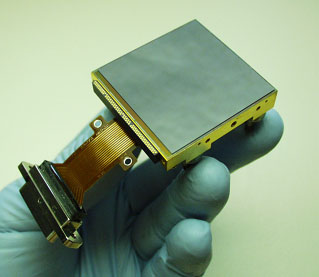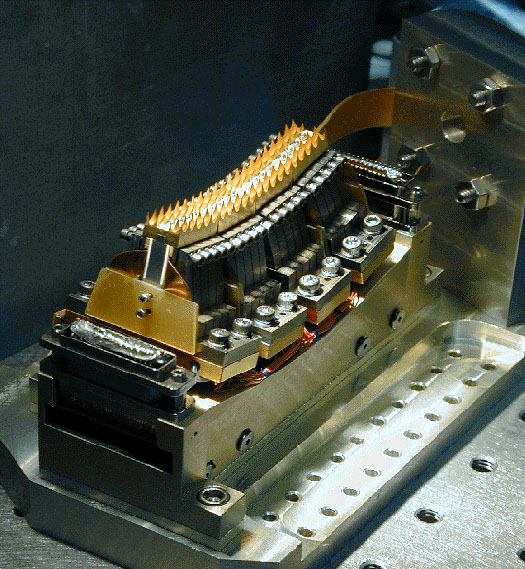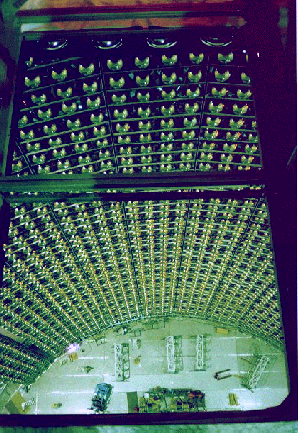| Here is an example (from Teledyne Imaging Sensors). It works in the
visible and near infrared, and has 4 million detector elements. Thus, it is a bit like the
sensor in a 4 megapixel digital camera. Both devices absorb the photons and each photon
frees an electron in the detector material when it is absorbed. These electrons can move
around as an electric current, and this current is finally amplified and sent to a
computer to display an image. Signals of just a few photons can be detected in this way,
allowing the beautiful pictures that you will find in these notes. |
 |
| Detectors for the X-Ray, ultraviolet, visible, and much of the
infrared all look a lot like the one above, but different approaches are needed for
photons of much shorter or longer wavelengths. For example, here is one for the very far
infrared. Little gold coated cones collect the light and funnel it into reflective
cavities, where is is eventually absorbed by a small cube of material, resulting in a
change in the electric current passing through this material. This detector is now in
space, on the Spitzer infrared telescope. |
 |
| Detectors change even more when we are trying to study particles
other than electromagnetic radiation. Here is the super Kamiokande neutrino detector in
Japan. A huge chamber is filled with water (not in place yet in this picture). When a
neutrino interacts in the water, it can produce a tiny pulse of light. The "fly's
eye" appearance of the walls is due to many sensitive light detectors that will pick
up this pulse. |
 |


